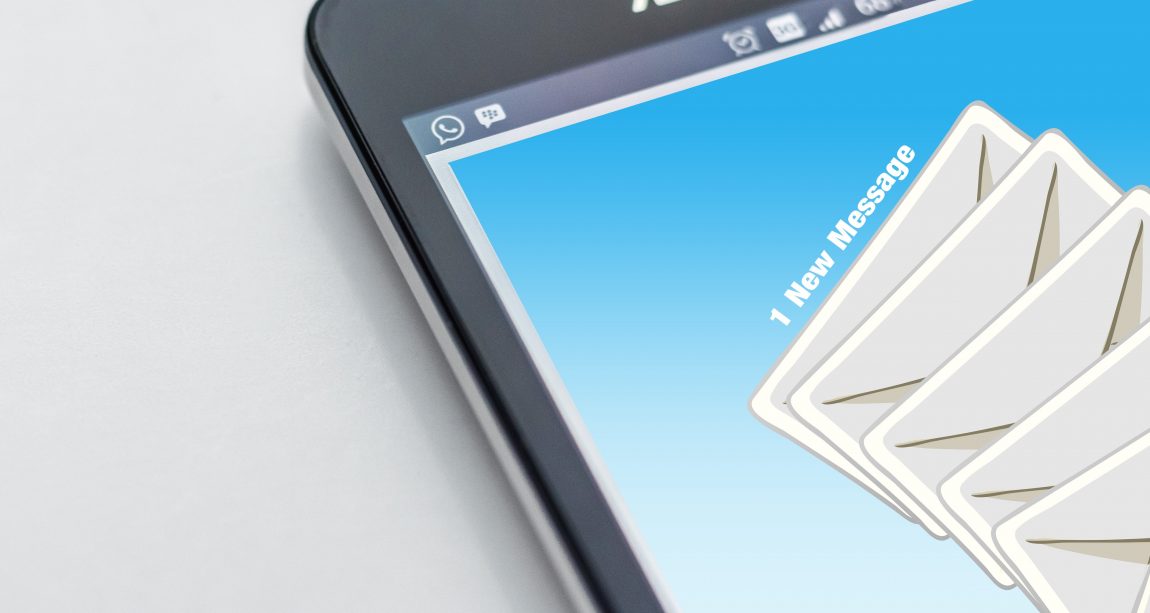by MGB2B
 Social media is a relatively new channel in the world of B2B marketing, and some are still reluctant to make the leap into this new digital landscape. That’s all well and fine, but for those who are in the trenches day in and day-out tweeting, updating, posting, and measuring metrics, it’s been a learning experience filled with lots of trial and error. Add in the holiday season, and you are faced with a dilemma: wanting to remain active on your channels during these months, while also knowing the return may not be as rewarding.
Social media is a relatively new channel in the world of B2B marketing, and some are still reluctant to make the leap into this new digital landscape. That’s all well and fine, but for those who are in the trenches day in and day-out tweeting, updating, posting, and measuring metrics, it’s been a learning experience filled with lots of trial and error. Add in the holiday season, and you are faced with a dilemma: wanting to remain active on your channels during these months, while also knowing the return may not be as rewarding.
Let’s dive deeper into this…
During the months of November-January, there is a noticeable slowdown in nearly every area of business: leads, sales, marketing, social media, you name it– it seems like it’s put on hold. Why is that? Thanksgiving, Christmas, Hanukkah, and Kwanza all happen within a few short weeks of each other, and chances are your target audience is celebrating at least one of them. And with these celebrations come vacations. With vacations, come breaks from work emails, calls, meetings, and anything else that would require professional attention. Unfortunately, social media is no stranger to these breaks, so engagements, interactions, clicks, replies, and all other social metrics take a hit.
Here’s what you can do:
1 ) Prepare. If you had stellar growth or engagement the other 10 months out of the year, it’s okay to have one or two months that are slow. There is still success to be found during these times! The months of November and December (unless you are a B2C business), will be a change in pace, but only because attention is shifted to cooking meals, traveling, and buying gifts. Instead of trying to stand above the noise with new product offerings, launches, or updates, get in on the action. Integrate these holidays into your social calendars. Be sure to recognize them with their own social posts, wishing your followers a Merry Christmas, Happy Hanukkah, or Happy Kwanzaa. It’ll add a personal touch that will go a long way with your follower base.
2 ) Switch up your short-term strategy. Instead of blasting your social feeds with product launches, spotlights, white paper download calls-to-action, or other important business-related information, try to post about fun things your office may be doing to celebrate. Having a holiday party? Post pictures! Exchanging gifts? Let your audience know! These types of posts will resonate with your audience, show a human side, and potentially create a stronger relationship between buyer and seller.
3) Set realistic goals. Unless you’re running multiple paid campaigns, seeing substantial follower growth, engagements, or impressions during the holiday months may be a struggle. Instead, focus on other goals like maintaining a presence during the season (don’t go dark on social), or getting your holiday-related posts out there via your employees. Encourage them to retweet or share your company posts. This will help things like impression count and engagements while keeping everyone around you involved.
4) Have fun! This might seem a little on-the-nose, but it’s important to remember that at the end of the day, you’re maintaining a social media account to help your business. Sometimes that means getting in the holiday spirit, being creative, and enjoying yourself.
Continue Reading
by MGB2B

As a B2B marketer, maintaining a positive relationship is vital to your sales funnel. One of the best ways to do that is through B2B email marketing. It’s one of the most productive lead generation tools, but there are many ways to overstep your boundaries. When it comes to content, accessibility, and frequency, here are five things to keep in mind as you construct your next email campaign.
1. Sending Too Frequently
Many things are better in moderation, and marketing emails are no exception. We know what you’re thinking: we just told you that staying in touch with your customers is important. But flooding their inbox can have the opposite effect. Your customers receive hundreds of emails like yours, and it’s your job to ensure your email doesn’t get lost in the clutter. By sending emails less frequently, your customers will be less likely to feel badgered and opt out of future communications.
2. Lack of or Excess Personalization
There’s lots of talk of personalization these days, and with good reason. Consumers want to feel attended to and known. In fact, 82 percent of marketers reported an increase in open rates through email personalization, while 75 percent believe that personalization yields higher click-through rates. But keep in mind, this is more than simply a “Dear So & So.” It’s about knowing what your customers want. Sending them emails with products that match their previous interactions with you is one way to do it. But if you send them emails for products that don’t match their interest, or worse, products they’ve already purchased, your emails will become more white noise in their inbox.
This has to be done with a deft hand, however. Too much personalization can be a turn off in a creepy, big brother sort of way. It’s all about balance, folks. Fine tune your efforts so personalization is gradual, purposeful, and accurate.
3. Mobile-Unfriendly Layout
Though people still use their desktops, more and more people stay on top of their email from their phones. It’s important to make sure your content is optimized for all devices. If your images don’t load or your text is wonky, you can expect a swift delete.
4. Poorly Written Content
Customers are savvy. An elementary voice, grammatical errors, or poorly written content suggest your company shouldn’t be taken seriously. Furthermore, body copy that’s too wordy will be a turn off because no one has the time to read a tome.
5. Bad Subject Line
The subject line is the first written content your customer sees, and will define whether they open or delete it. Short, to the point, with just enough hook to pique their curiosity is the way to go. Otherwise, your email content will never be seen.
Considering that today’s marketers need to do more with less, email marketing gives us a whole lot of bang for our buck. And while other marketing trends come and go, email marketing remains a workhorse. To use it to its fullest potential, make sure you keep yours in line with the tips above.
Continue Reading
by MGB2B

Myth: B2B Brands Can’t Be Funny
Truth: Humor Can Be Effective, It Just Needs to Be Done Right
Who says B2B brands can’t be funny? Not us. True, using humor in B2B marketing requires a deft hand (think: wry smile versus a big-knee slapper). But since most B2B brands shy away from being funny, adding a dash of mirth to your marketing can make you stand out from the rest.
What Can Humor Do For Your Brand?
1. Develop Brand Affinity
It’s important to remember your audience is made of up real people with personalities. At the end of the day, your advertising and social media content is targeted at these real people, and they’re making buying decisions daily. Serving up a smile amidst copious amounts of other content can spark an affinity for your brand, giving your company a toe-hold that might not have been there before. To do so, you don’t need to whack your audience over the head. Go for subtlety rather than over-the-top comedy.
2. Get A New Spin on a Service
Many B2B brands try to include everything they do or get super technical to make a hard sell. But overwhelming your buyer isn’t going to be very helpful to them – or to you. So why not take a different approach? Cisco promoted their router by offering it up as a Valentine’s Day gift. While that seems illogical (and according to them, it is), the ad did its job by making a mark. Cisco suddenly had something it was known for, this extremely creative and humorous ad. That got people thinking about their brand – and looking at their more informative content.
3. Garner Likes – And Shares
You develop content because you want people to see it. The more eyes on your content, the higher the chance of getting the right people interested and clicking. By algorithm alone, a mere like from your audience can expand the reach of your content significantly, even more so if the content is shared. A little well-timed humor can increase your chances of both.
4. Enhance Your Story
Oftentimes, what your brand is promoting isn’t easy to explain. Especially now, when marketing is all about story-telling. Being funny adds the perfect opportunity to make your content engaging and boost your brand’s story. Tim Washer, comedian and corporate humorist, has stated, “Comedy can cut through all the noise, it makes the point in a very clever way, and it connects with people so they listen.” When done right, humor is relatable and understandable. And that adds tremendous strength to the content your brand puts out. Want to see a great example? Check out Slack Communication’s outdoor campaign.
Where can you use humor?
This depends on your brand voice, but humor can live across your content – from ads to blog posts to video content. But remember, your attempts need to back a solid message – and be distributed in the right places. Facebook is an easy place to insert a little levity, like Park New Haven does here. And although LinkedIn is a more professional channel, you can still benefit from a bit of strategically placed wit. Remember, the key is a light touch. You’re not looking to define your brand as the class clown. You’re simply looking to elicit an appreciative response. Need help getting started? Drop us a line.
Continue Reading


